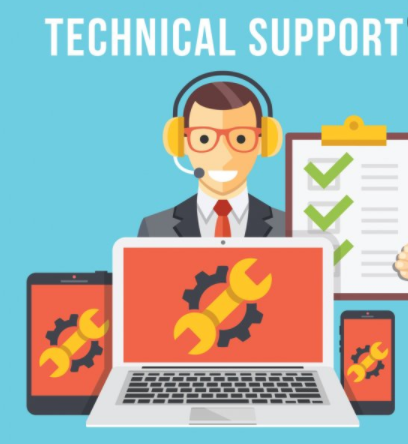These two words are often conflated and combined, some people even use the two terms together. These two terms, on the other hand, are utterly different. Your assistance techniques might be improved by knowing how to differentiate between these words.
Technological support is primarily concerned with resolving technical issues. These are perceived or actual flaws in the Service or product for which the client seeks assistance. Customer service takes a distinct approach, concentrating on the customer’s experience.
Both Customer Support and technical support have distinct roles and responsibilities in an organization. When it comes to technical assistance, a help desk is primarily focused on answering client questions and improving the customer experience. Consider the following definition of “Help Desk” in more detail:
What is the difference between technical and customer support?
Technical Support: Technical support is the aid given to a user who needs assistance with a technical product or service, whether hardware equipment or a software application. As a result, technical assistance is rarely offered to clients but rather to those who specifically want it.
Technical Support personnel is often well-trained and knowledgeable in understanding the ins and outs of hardware and software products. The higher the expertise needed for Technical Supports reps, the more complicated the company’s product or service.
Customer Support: Customer service is a collection of techniques that aim to improve interactions between your consumers and your organization from pre-purchase through post-purchase.
Client service is present at every point of contact between the customer and the company. As a result, customer service best practices are often taught to all employees who may contact a client at any time.
Client service’s ultimate objective is to provide a seamless and enjoyable connection between the customer and the company.
Difference
As previously stated, there are substantial disparities between how the two persons in the issue operate and approach their respective tasks. Here is a breakdown of the fundamental differences between Customer Support and technical support:
Goals differ from one another.
Customer Support: Customers’ initial point of contact with a company is often Customer Support, which has a more customer-centric approach.
The primary objective here is to meet customers’ demands to increase the firm’s customer satisfaction quotient. Most of the time, help desk executives take a more proactive approach to client service and begin engaging with them.
Their responsibility is to provide general assistance to customers and escalate technical concerns to the technical support staff.
Technical Support: The primary goal of the technical support staff is to provide technical assistance to customers. They must assist consumers in resolving technical issues or malfunctions in the company’s products/services they have purchased. There may be perceived or actual flaws in the product or service with which they are having difficulty. Technical support personnel is responsible for determining the root cause of technical issues and resolving them as quickly as possible. Client service representatives strive for past success to handle the problem, and the customer does not have to contact them again.
When it comes to listening to customers, many approaches are used.
Customer Support: Customers must be listened to with empathy, and their priorities must be put first by Customer Support executives. They are responsible for assuring the client that the team is working on their issue and that they (the customers) are important to the organization.
Staff at Customer Support do not often listen to “fix” an issue but rather propose a possible solution for the problem at hand – the recommendation may be a new product/service, or it may be a different method to use the existing product or Service.
Technical Support: professionals are more concerned with confronting difficulties head-on than with avoiding them. They strive to handle technical difficulties as soon as possible. As a result, technical support representatives listen to clients to assist them in “fixing” the issues they are experiencing.
To do this, technical support personnel must first listen to what customers have to say before guiding them through specific steps to resolve their problems.
Different Problem-Solving Approaches: Comprehensive vs. Targeted Problem-Solving
Customer Support: Client Support is intended to adopt a comprehensive and all-encompassing approach to resolving customer issues.
As a result, Customer Support personnel must have a comprehensive understanding of all product/service-related issues without necessarily possessing in-depth technical knowledge of how they operate.
Technical Support: On the other hand, the technical support staff makes an effort to resolve difficulties using a target-specific approach.
They are subdivided into several sub-parts, such as software, hardware, network, system, etc. As a result, they can provide highly specialized solutions for technological problems.
After reading the extensive explanation above, it should be apparent that the help desk and technical support are the two most important pillars of excellent customer support service. They are both required to guarantee that a company’s customer support service works as smoothly as possible.
Conclusion
Help for customers and technical support are essential for the maintenance of long-term client relationships.
As a result, it is an important component in increasing customer loyalty, retention, and recurring income. While these words are sometimes used interchangeably, it is critical to distinguish between the two and to invest in both areas to ensure customer satisfaction and high-quality customer experiences in the long run.
Businesses that can provide both customer assistance and technical help by responding reactively and engaging efficiently will have a competitive advantage over their counterparts in the marketplace.









